The use of data in recruitment in football has become more widely discussed among fans and media in recent years.
Previously, teams that used data to identify potential targets and cut through the noise were relatively few and far between, but now clubs at almost every level of the professional game are using data in one way or another as part of their recruitment processes.
So, if clubs at all levels are using data now to inform their choices, how can we still get an edge when it comes to our own recruitment? The answer lies in using the data that you have available to create insights that your competitors will not be able to easily match.
In this article, we will show how we can use a combination of event data for players and teams to create meaningful insights that will shine a lens on some players who may not be immediately mainstream.
We will use data from Wyscout, which comes with its own challenges in terms of the way that the data is logged, but as long as we are consistent in our use, then we should have no issues.
The main crux of the article is to use data to calculate the level of contribution that midfield players in the top five European leagues have specific to their teams in key areas.
The two areas that we are going to be looking at are progressive passes, where we see which players contribute the higher % of progressive passes for their team from deeper areas, and a metric called threat created, which is found by combining and weighting some of the publicly available data on Wyscout.
We will examine each metric for players aged 32 and under and then players aged 23 and under in the top five European leagues and provide a focus on some of the interesting players that are highlighted.
% of progressive passes for players aged 32 and under
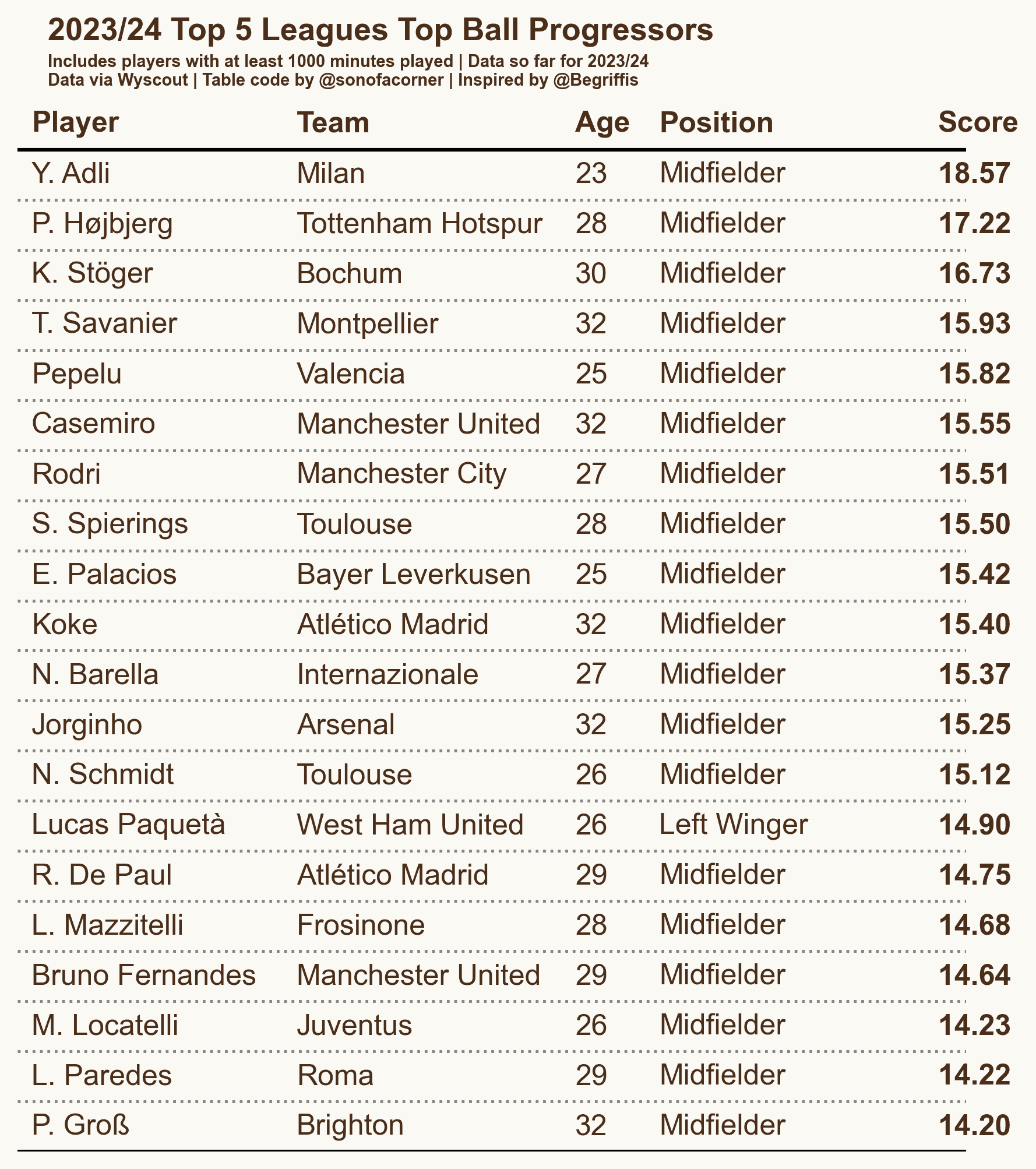
The initial data check provides the top 20 shown here as players are ranked based on the % of their team’s progressive passes that they are responsible for.
It is worth, at this point, discussing how this can work to highlight players that might not appear if you just rank progressive passes per 90.
If a team is possession-dominant, their players get more opportunities to play progressive passes; if they are not possession-dominant, they have less—this method of data analysis levels the field in this regard.
We should point out, though, how impressive it is that Rodri (15.51% of City’s progressive passes) and Ezequiel Palacios (15.42% of Leverkusen’s progressive passes) have surfaced, given how possession-dominant those teams are.
Yacine Adli of Milan is the top-ranked player, responsible for 18.57% of Milan’s progressive passes.
The player that we will select in this instance, however, is the 32-year-old French midfielder Téji Savanier of Montpellier.
He is responsible for 15.93% of Montpellier’s progressive passers, and he deserves a closer look.
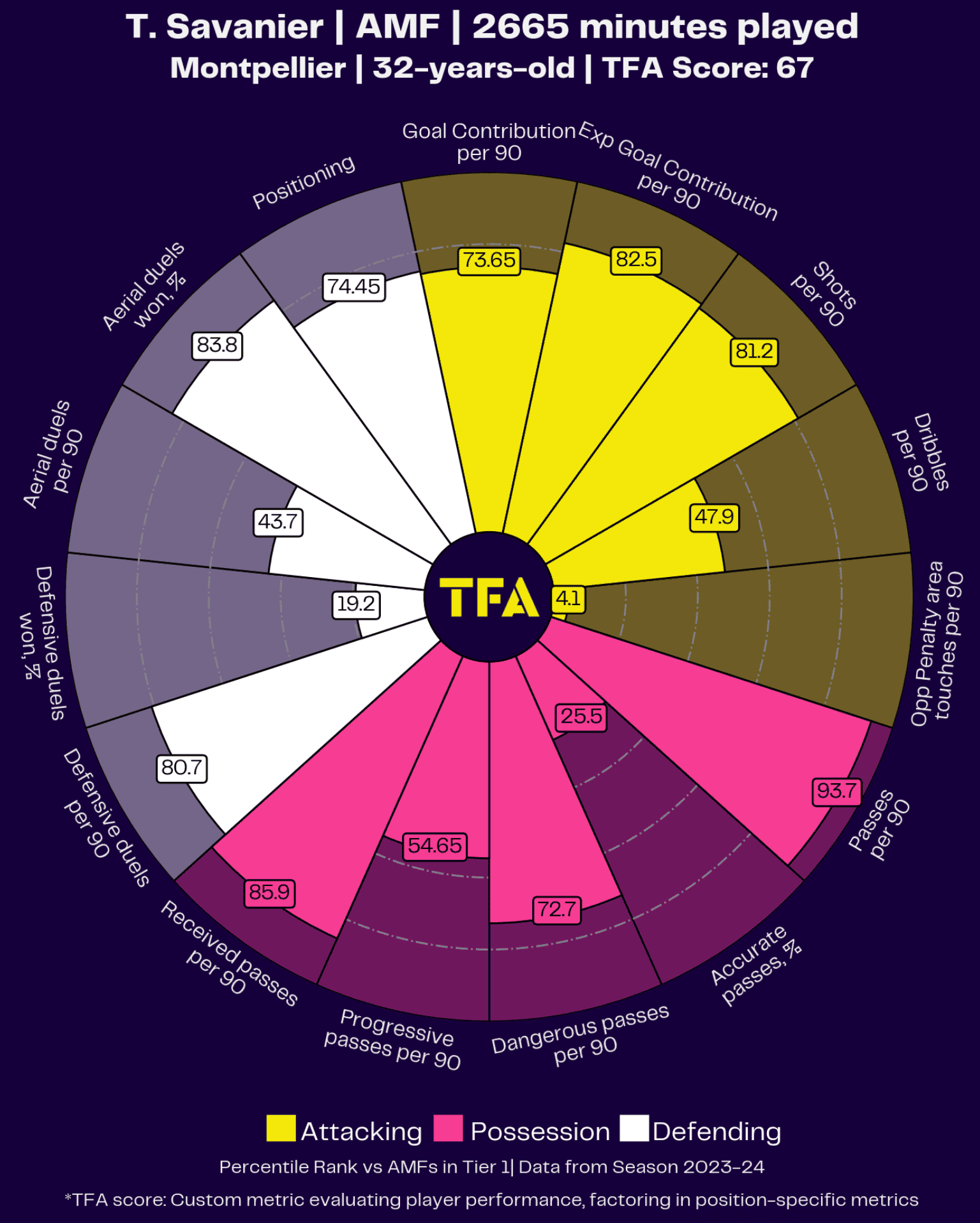
As you can see from his pizza chart, he is balanced across all game phases.
However, if we concentrate on his passing section, he is in the 93rd percentile for passes per 90 but only the 25th percentile for pass completion percentage.
While he is a volume passer, he is aggressive in trying to drive forward, which is shown by the fact that he is in the 72nd percentile for dangerous passes and the 54th percentile for progressive passes.
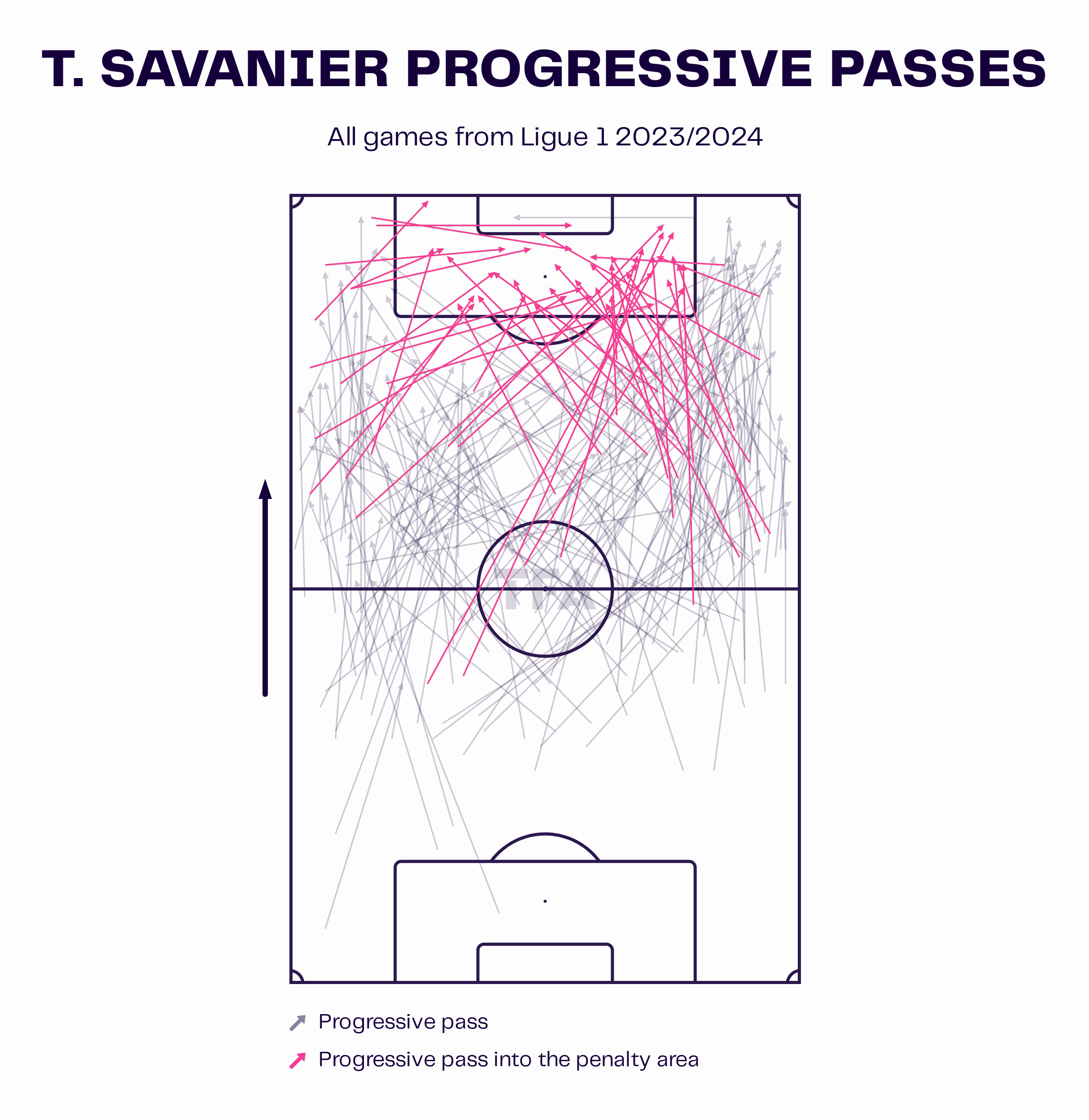
However, when we drill down further into the event data for Savanier so far this season, we start to see how effective he is for this Montpellier team.
He plays across the width of the pitch and creates a lot of threat with his progressive passes that break into the final third and into the opposition penalty area.
Given that Savanier is so crucial for Montpellier in terms of their ball progression, the club will have to start developing a plan for when he inevitably regresses or decides to hang up his boots.
% of progressive passes for players 23 and under
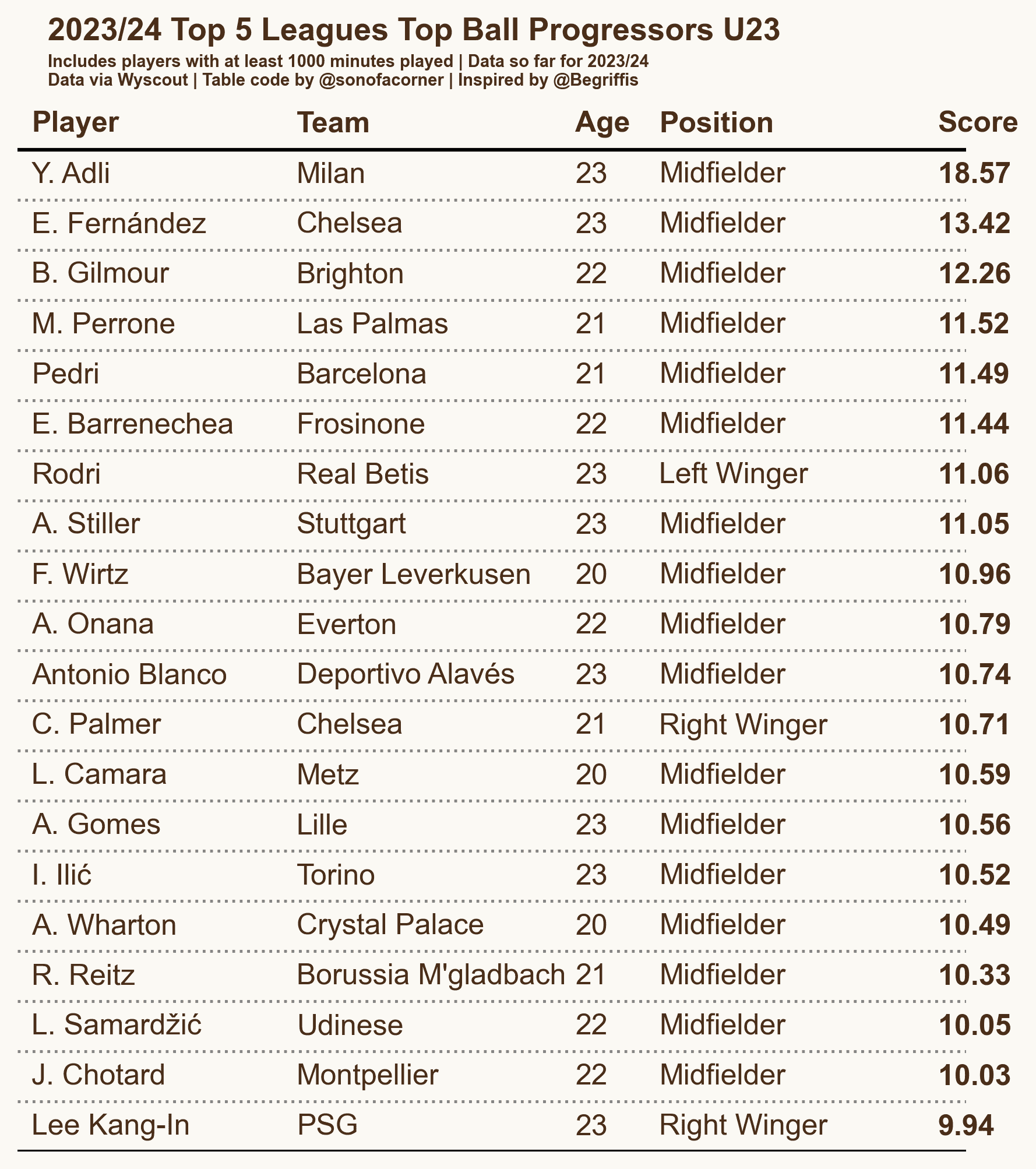
Next, let’s filter our data only to show players who are aged 23 years old and under to see what insights come through.
As we would expect, Yacine Adli of Milan is still first in the ranking.
As we go down the top 20, though, some interesting names start to surface.
Fans of Manchester City will be pleased to see the 21-year-old Argentinean Maximo Perrone is featured, as he is currently on loan at Las Palmas from the English side.
Perrone is currently responsible for 11.52% of Las Palmas ball progression.
Another player on loan who is performing well in this metric is the 22-year-old Argentinian midfielder Enzo Barrenechea, who is currently with Frosinone in Serie A on loan from Juventus.
Having passed him over in the first section, however, we need to drill deeper into the performances this season of Yacine Adli of Milan.
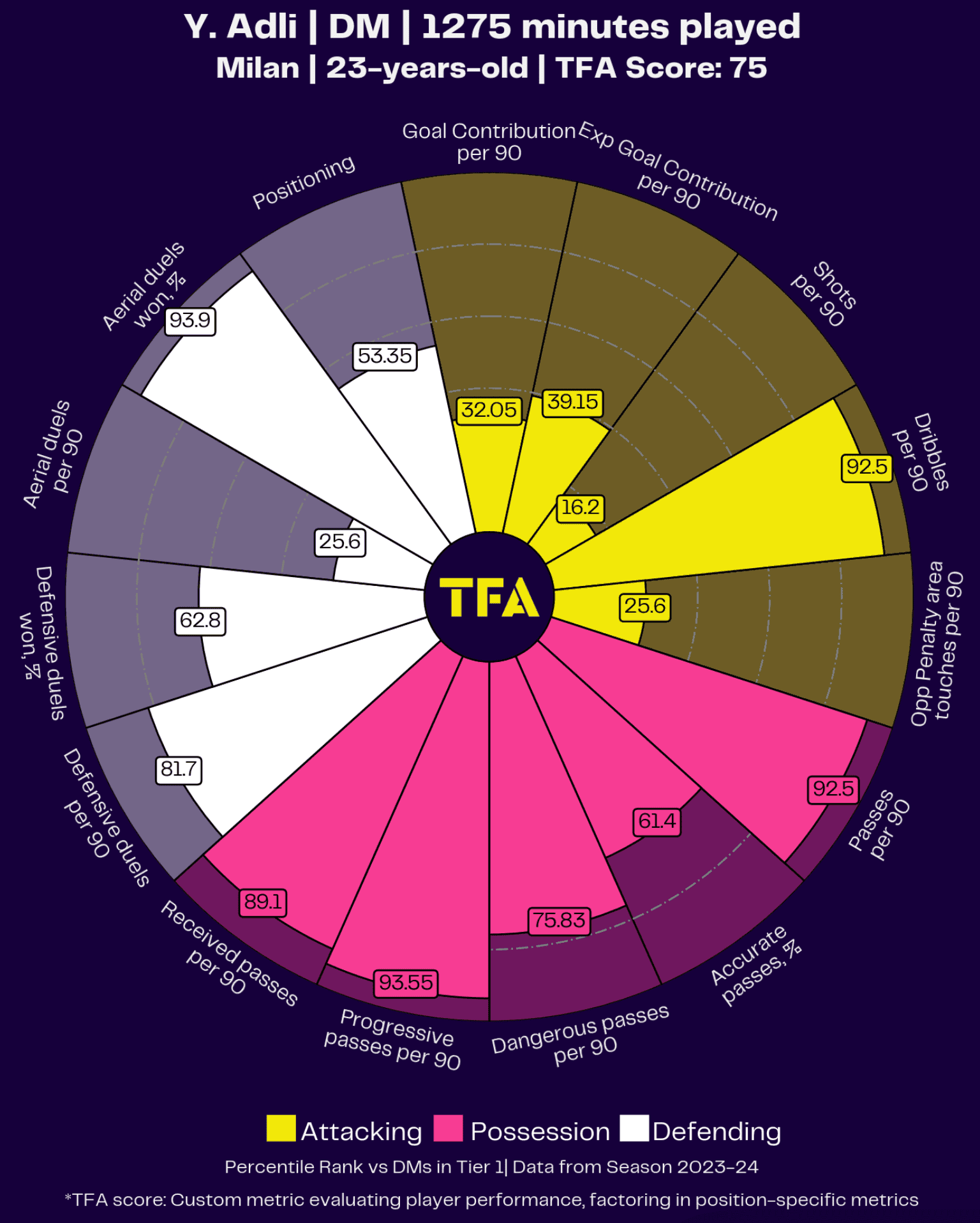
Yacine Adli has been one of the most impressive ball progressors and creators in Serie A this season.
Despite Milan underperforming their expectations, his performances have been a bright spot.
His passing metrics, in particular, stand out: He is in the 92nd percentile for passes per 90, meaning he generates volume, the 75th percentile for dangerous passes, and the 93rd percentile for progressive passes.
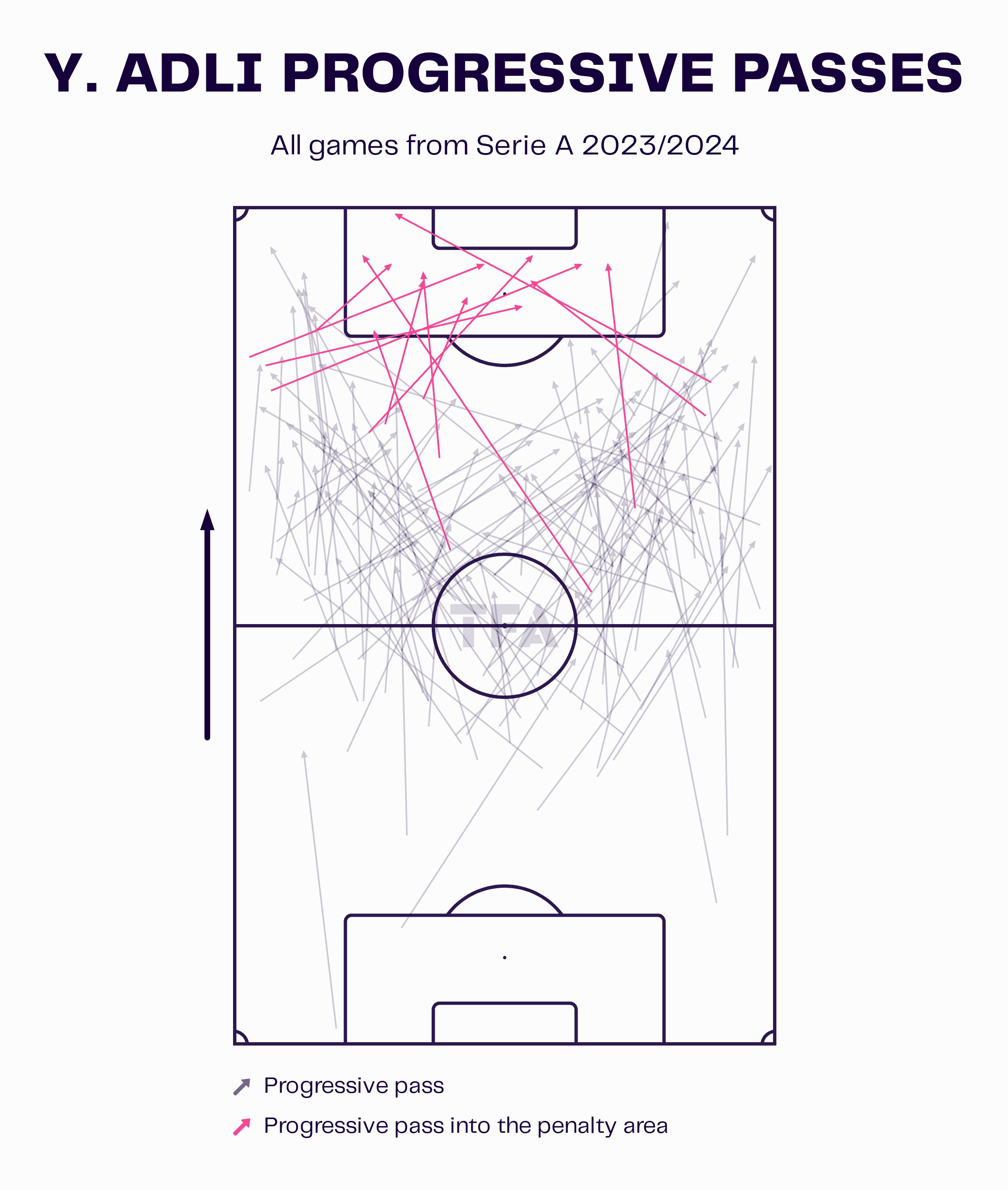
Again, using even data, we can look more closely at his progressive passes this season so far.
As you can see, he can play longer line-breaking passes that effectively move his team forward and up the pitch.
Adli is the kind of player that we would expect Milan to be looking to build around.
Threat creation for players aged 32 and under
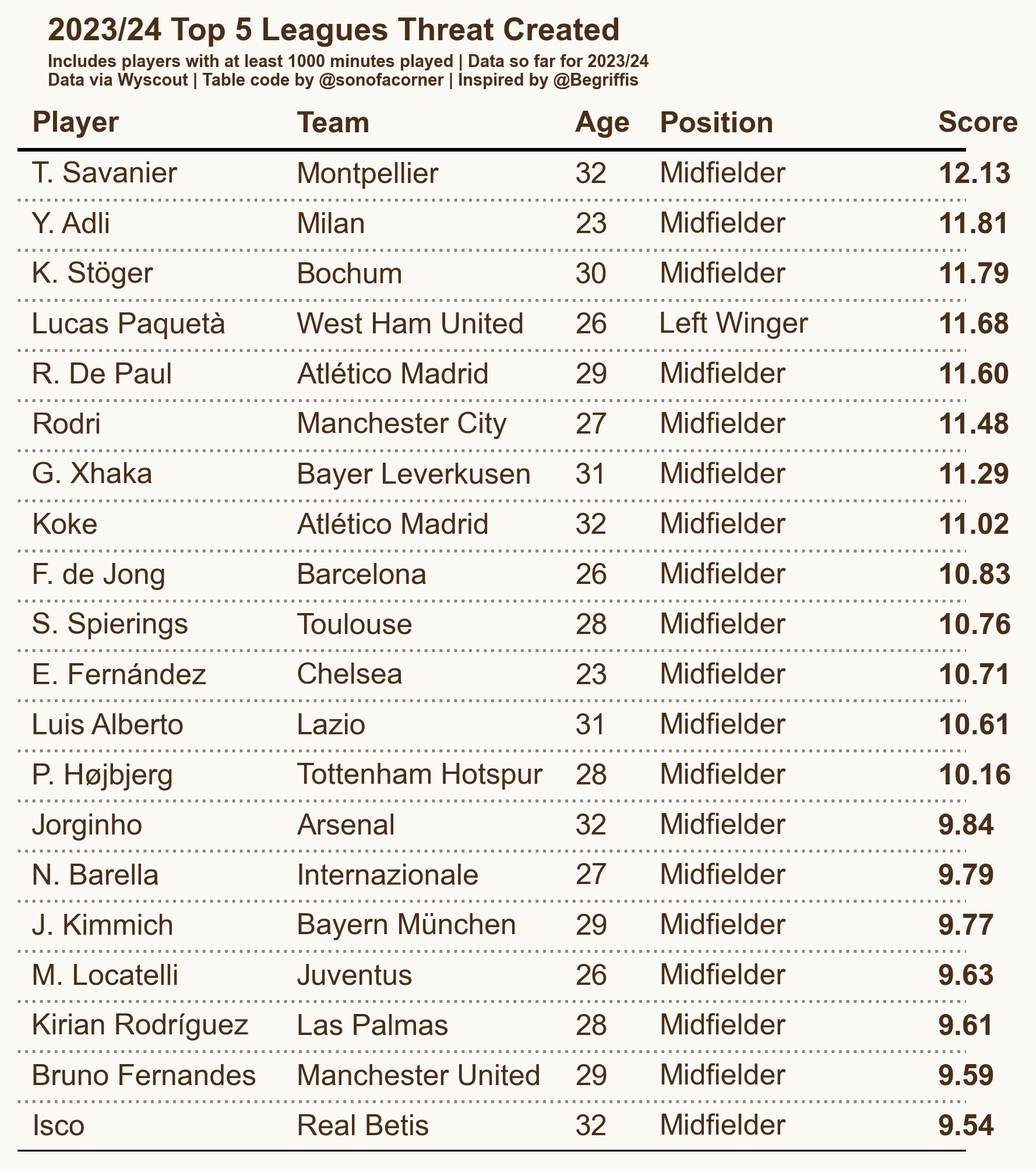
Next, we will turn our attention to the threat-created metric, but unfortunately, I will not be going into it in depth as it has been created for internal use.
Other than that, however, the same methodology has been used for this section, with the percentage that each player is responsible for his team’s threat being calculated and then ranked.
Interestingly, both Téji Savanier and Yacine Adli again feature prominently, but let’s look further down the top 20.
Lucas Paquetá appears despite being considered a winger, and once again, we see Rodri feature prominently for Manchester City while this time for Leverkusen Granit Xhakha features for Leverkusen.
While Palacios is more responsible for ball progression in deeper areas for the German champions, the Swiss international Xhakha creates more in the opposition half and final third.
We have highlighted for a closer look, though, the 30-year-old Austrian midfielder Kevin Stöger of Bochum in the German Bundesliga.
Stöger is a fascinating player who was close to moving to England to join Brentford a few seasons back.
As you can see, he ranks third on our list as a player with an 11.79% contribution to his team’s threat creation.
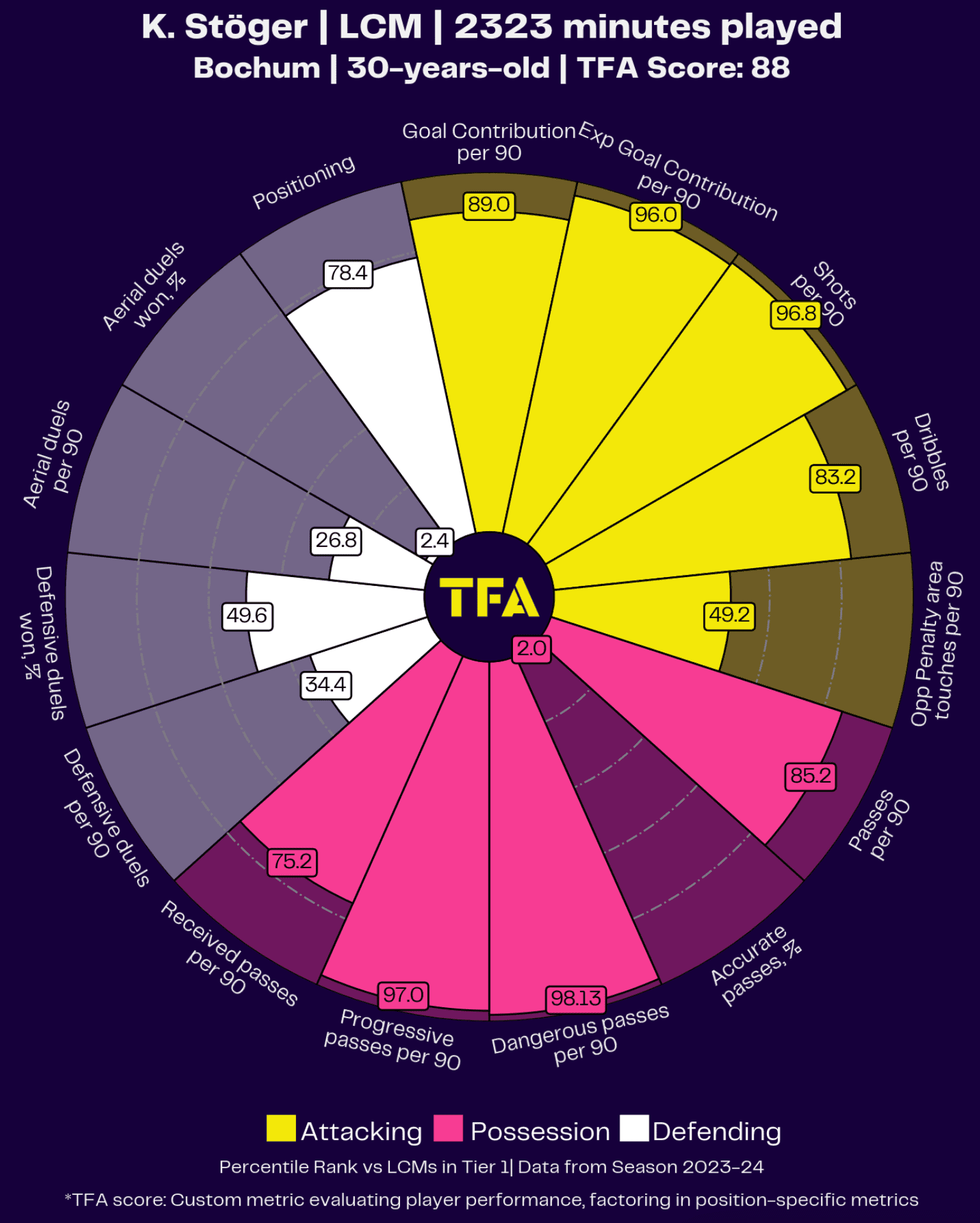
Stöger’s pizza chart is extremely interesting, given the obvious issues with his passing profile as a central midfielder.
In general, his volume and output is extremely impressive, as he is in the 85th percentile for passes per 90 and the 98th percentile for dangerous passes per 90.
This is combined with being in the 97th percentile for progressive passes per 90.
All good, right? Well, until you get to his % of completed passes percentile and notice that he is in the 2nd percentile!
His volume is high, but he is very much a risk-reward player in possession.
So, why is this an interesting player profile? Well, let’s look at his event data, and you will see why.
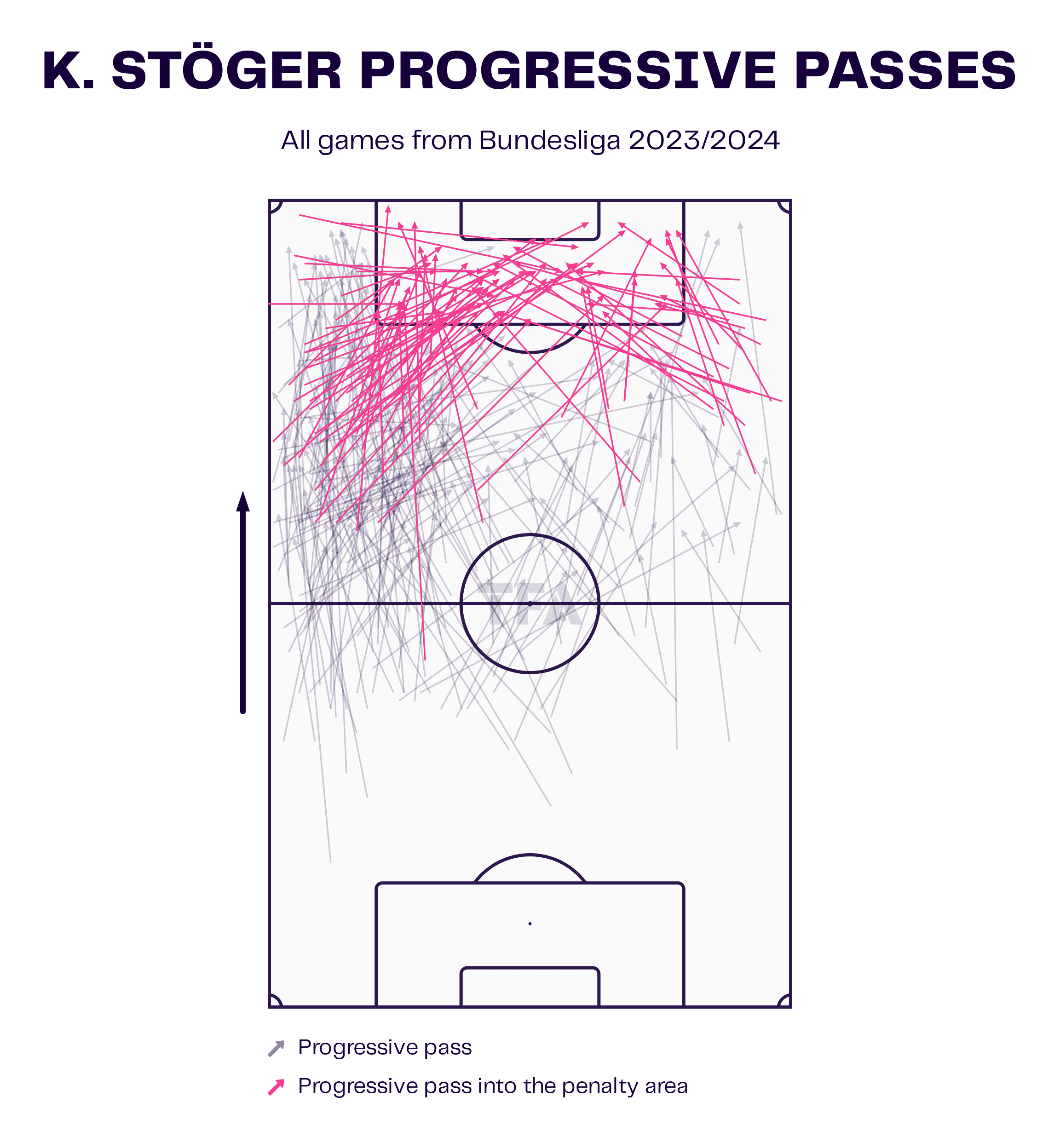
The threat that Stöger creates when playing in the opposition half is clear to see.
He generates an extremely high level of line-breaking passes and passes into the opposition penalty area.
As a 30-year-old midfielder with this level of output, he is an extremely interesting player.
Threat creation for players aged 23 and under
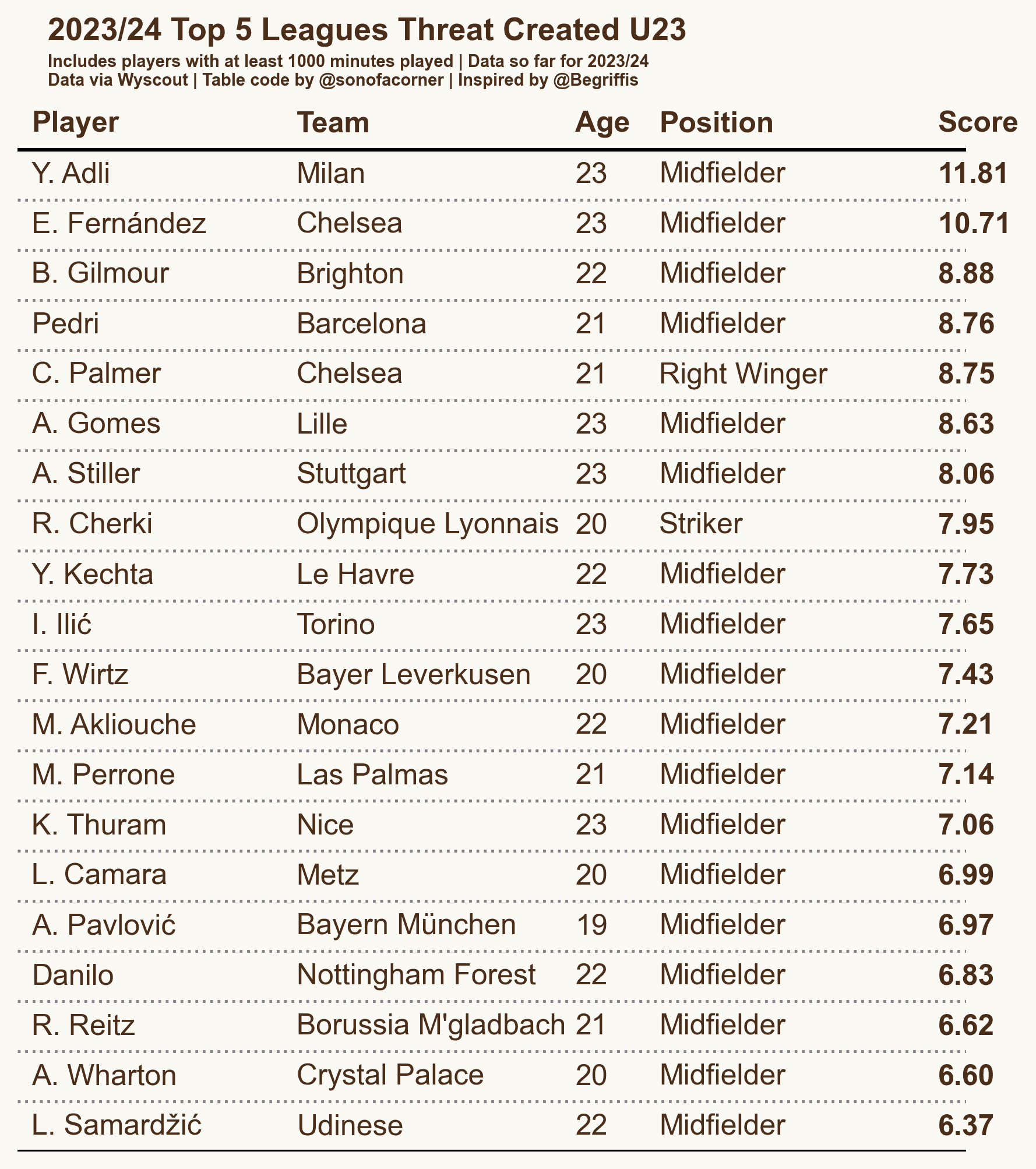
Finally, we will filter the data to show the threat creation of players aged 23 and under in the top five European leagues.
Once again, the French midfielder Yacine Adli features at the top of the ranking, responsible for 11.81% of Milan’s threat creation so far this season.
As we go further down the ranking, some really interesting names start to surface.
Billy Gilmour of Brighton is responsible for 8.88% of Brighton’s threat creation; Yassine Kechta of Le Havre is another fascinating player who has surfaced in the data, as he is responsible for 7.73% of his team’s threat creation.
The player that we are going to highlight, however, is the 23-year-old German midfielder Angelo Stiller of VfB Stuttgart.
The former Bayern Munich midfielder has impressed this season as Stuttgart have pushed for a Champions League place.
The midfielder has been responsible for 8.06% of Stuttgart’s threat creation.
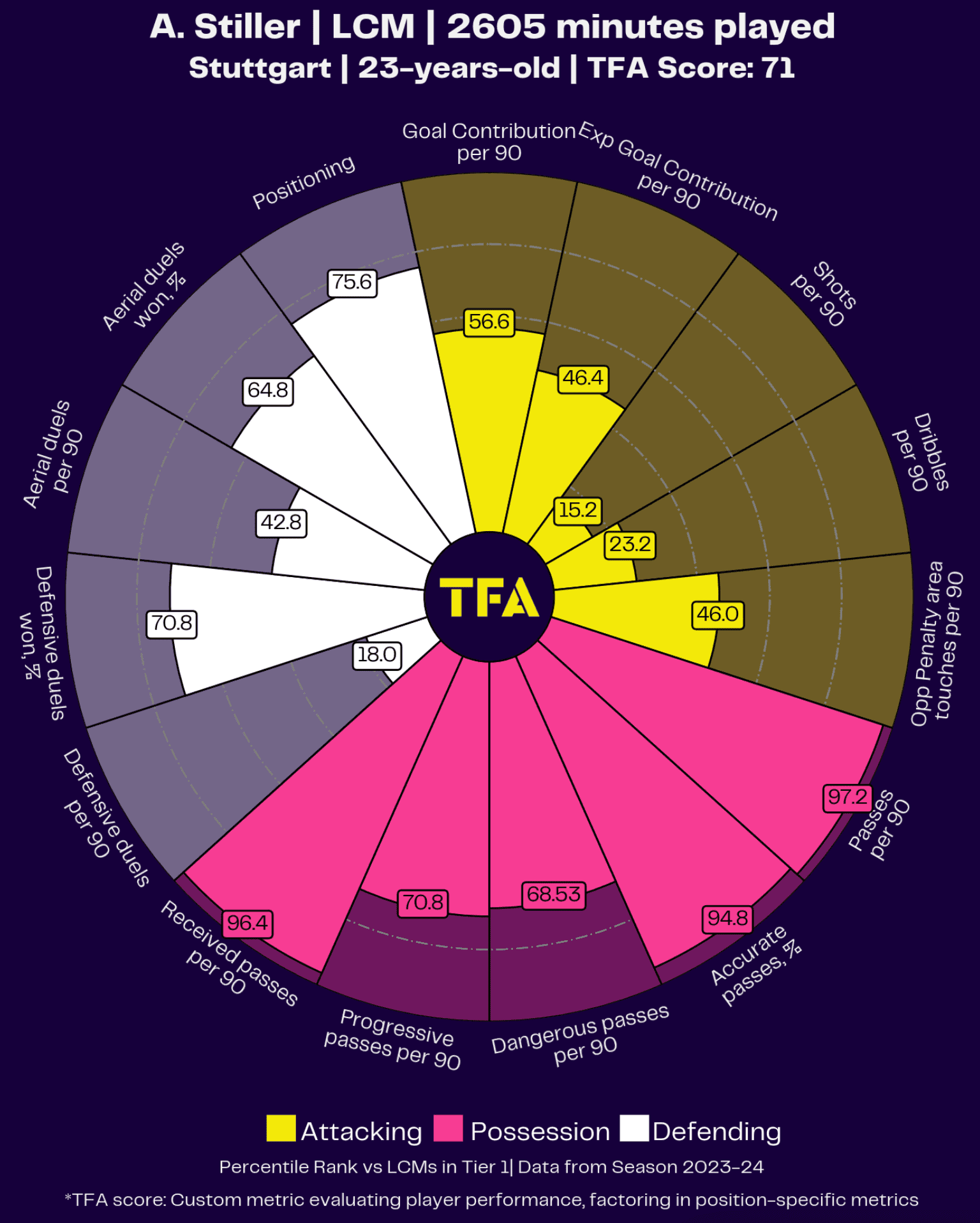
Once again, the pizza chart for Stiller is impressive, especially in the passing and possession phase; he is in the 97th percentile for passes per 90 and, unlike Stöger, he is safe and secure in possession as he is in the 94th percentile for pass accuracy %, He moves the ball into advanced positions effectively.
He is in the 70th percentile for progressive passes and the 68th percentile for dangerous passes.
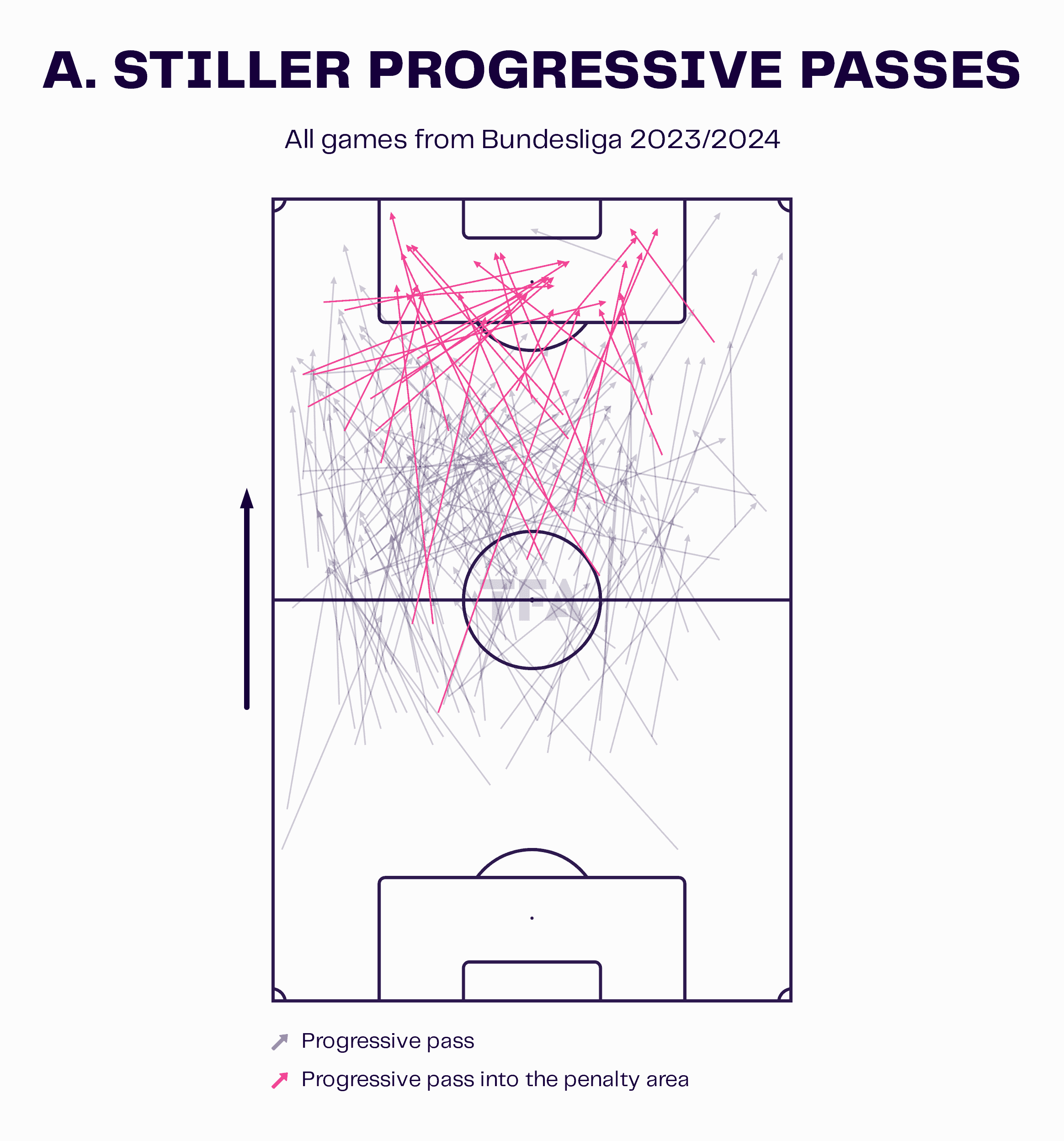
Once again, we can drill down further into Stiller’s data and see how effective he is for Stuttgart in the opposition half of the pitch.
His passing and ball progression are typically very good, and he creates chances for teammates with his ability in the final third to play the final pass into the opposition penalty area.
Conclusion
Data use is so widespread in football today that to get an edge on your competitors, you have to be able to use the data you have available intelligently to create and leverage insights.

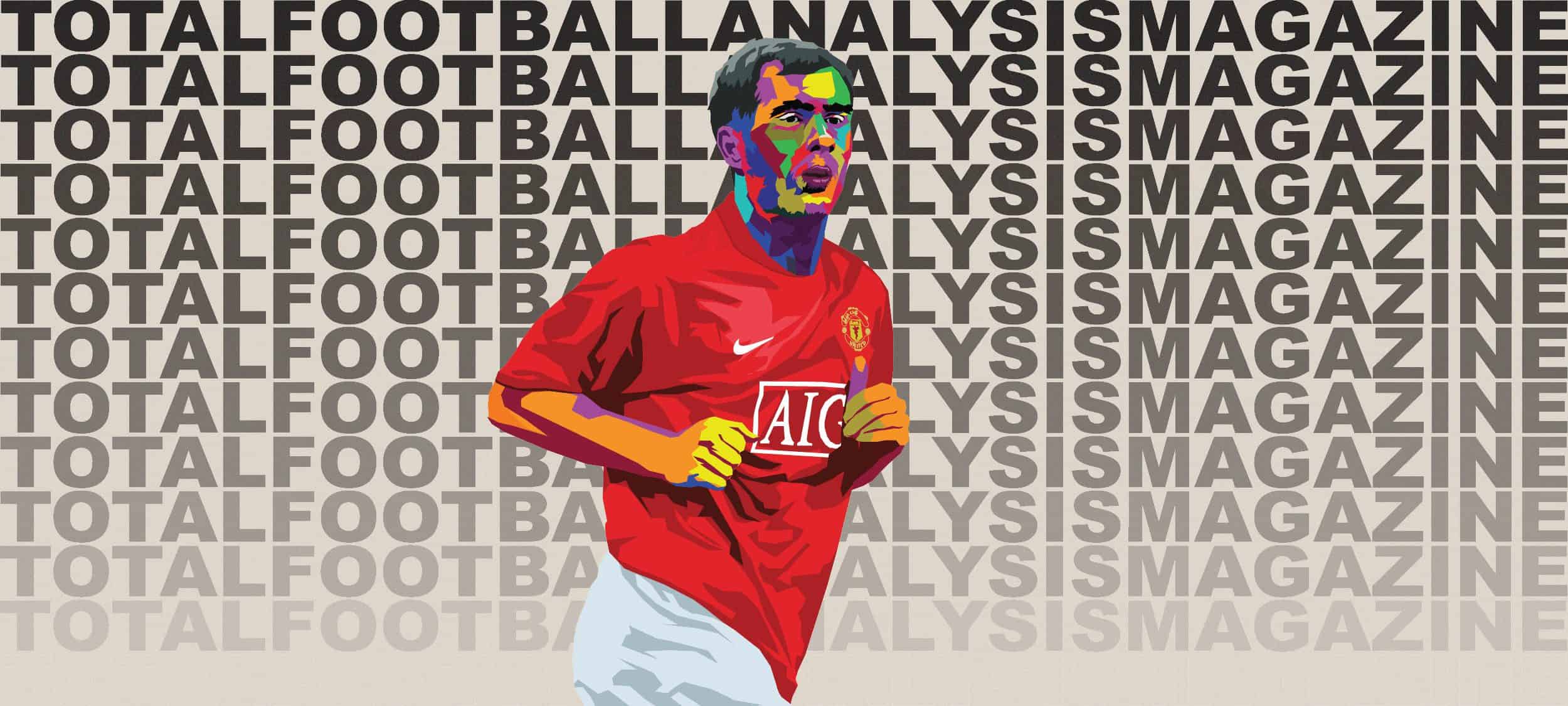




Comments